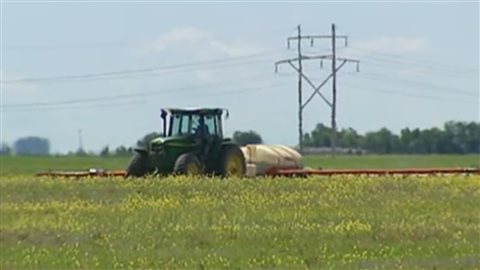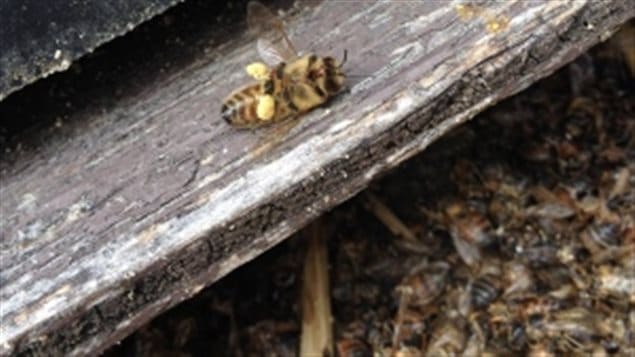In a just released statement, the Ontario Beekeepers’ Association (OBA) says results of a recent survey show that Ontario bee overwinter survival rates are still dramatically higher than normal.
In a press release on Friday, the OBA says Ontario beekeepers report a loss of about 38%. While that figure is down significantly from losses last year of over 50 percent, the OBA says it’s still three times the national average.
The OBA has long insisted that overuse of neonicotinoid insecticides on crops is a major contributing factor. It says if the chemical doesn’t kill bees outright, it weakens them and affects their neurological function, which eventually results in death.

Neonics are a neuro toxin, and David Schuit, a former bee hive inspector and owner of a large honey operation echoes what many scientists have said about sub-lethal doses of neonics. He said from what he’s seen the pesticide exposure affects a bee’s memory and they struggle to do simple tasks, like find the hive entrance. Bees also have a harder time breeding, and Schuit says he can’t manage to maintain enough queen bees for his business.
Frequently, he says he comes across Canada-geese and other bird carcasses on the fields. He said the birds die after eating exposed seeds coated with the pesticide.
According to the website of the Ontario Ministry of Agriculture Food and Rural Affairs, 99 percent of Ontario corn is treated with neonicotinoids, 65 percent of soy crops, 25-33 percent of cereals, and 100 percent of canola.
Ontario grows almost two thirds of the corn and soy in Canada.

“The only way to explain our excessive winter losses is the amount of corn and soy treated with neonicotinoids”, said Tibor Szabo, Ontario Beekeepers’ Association president. “Ontario’s winter was no worse than most other provinces, yet our losses were triple. And this number doesn’t even consider additional losses in the spring from weaker, overwintered hives.”
The Canadian Association of Professional Apiculturists (CAPA) survey asked beekeepers with more than 50 hives for the “main cause of death” of overwintered hives. A number of options were provided for beekeepers to choose from, but this year the survey omitted neonicotinoids or pesticides as an option. However, in a winter-loss survey undertaken by OBA earlier this year, 36% of beekeepers suspected pesticides weakened their hives.
In the CAPA survey, in the absence of pesticides as an option, Ontario beekeepers most often cited starvation, weak colonies in the fall, and poor queens.
Quoted in the OBA news release Tibor Szabo says “Chronic exposure to neonicotinoids from pollen, comb and honey in the hive will cause the hive to fail without showing the classic signs of acute bee kills we see in the spring and summer.”
The Ontario government recently announced regulations aimed at reducing the amount of neonicotinoids used on corn and soy. The government has set 15% as the target for bee mortality in Ontario by 2020.
Neonicotinoids represent 40 per cent of the insecticide market, and global sales tallied more than $2.79 billion in 2011







For reasons beyond our control, and for an undetermined period of time, our comment section is now closed. However, our social networks remain open to your contributions.